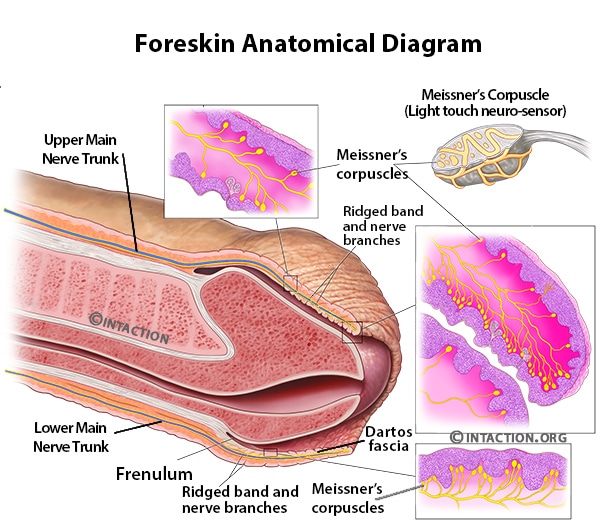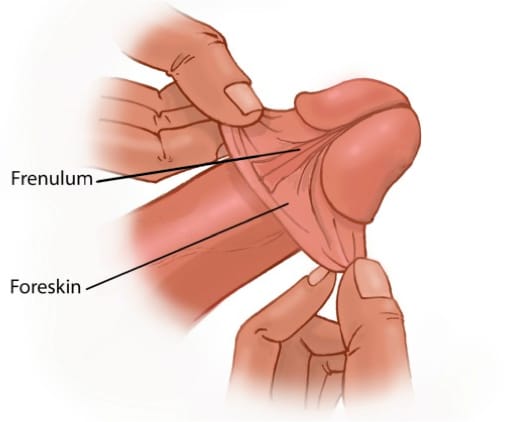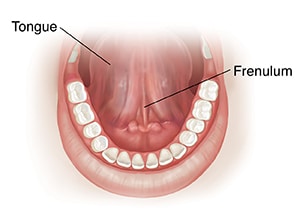What is Foreskin | Anatomy and Function
and why do humans have it?
by Judy Simone
Intaction Research Writer
July 7, 2022
Introduction
Everyone is born with foreskin. In males it covers the end of the penis. It can also be called the prepuce. In females it’s called the clitoral hood and surrounds the clitoris. Some cultures or religions advocate cutting off the foreskin, a procedure or ritual known as circumcision. It can also be called genital mutilation depending on perspective. For those that have undergone a traumatizing circumcision, there are no do-overs. That child will have to live his or her entire life never knowing what it would have been like to have this body part. Therefore it is crucial for Americans to fully appreciate the incredible foreskin. It’s a gift embedded in our genetic heritage and what we humans are born with — the foreskin.
What is Foreskin?
The foreskin is a thin sheath of highly specialized skin that extends from the penis shaft and covers the head or glans. Fully adhered to the head of the penis (glans penis) at birth, as a child matures the foreskin separates from the head and can then be retracted or pulled back. There is no specific time this happens as every child matures at a different rate. The foreskin can remain attached through childhood, but by puberty most foreskins are naturally retractable.
It’s comprised of a double-layer fold of skin (epidermis/dermis), muscle tissue (dartos), blood vessels, nerves , and a internal mucous membrane. The foreskin is responsible for protecting the head of the penis and the urinary meatus, which is the urinary opening at the tip of the penis. Stretchable and retractable, the foreskin acts just as the eyelid protects and covers the eye. During an erection the foreskin stretches to become some of the thinnest skin on the human body.
Sometimes men with an intact foreskin are incorrectly called “uncircumcised.” The proper term should be “intact” or “natural.” Depending on the foreskin length, coverage of the glans in the flaccid and erect states vary between individuals. The foreskin is a natural body part and medical experts around the world state that in most children and adults it never represents a health issue. Fortunately medical foreskin issues are rare, if they arise, are easily treated.
Foreskin Anatomy
Foreskin contains several significant structures often overlooked and disregarded by medical school anatomy books. The foreskin is chiefly comprised of the outer skin, the inner mucosal skin, the ridged band, frenulum, and dartos fascia.
Canadian anatomical researcher Dr. John R. Taylor discovered the ridged band which is located on the inner layer of the foreskin. There are approximately a dozen “ridges” in the skin that are said to contain over 20,000 specialized nerve endings. These fine touch nerve endings are called “Meissner’s corpuscles.” These nerves let a man know what his penis is feeling and how close he is to orgasm. When the foreskin is retracted during an erection, the ridged band becomes outwardly exposed and positioned to send sensory signals to the brain.
During an erection, the ridged band also becomes stretched like an accordion. The stretching of the ridged band triggers important sexual reflexes and erogenous sensation. The highly orchestrated feedback system helps men obtain maximum pleasure while helping them avoid premature ejaculation. A man that has been circumcised (foreskin surgically removed) doesn’t have the sensory input from the ridged band. A cut man’s brain doesn’t receive the sensory resolution of what his penis is feeling during sex.

Even More Amazing Anatomy
People seek answers to the question: What is foreskin? They are often surprised to find out about another interesting feature, a special part called the frenulum. The frenulum is a tough elastic webbed strip of skin that keeps the lower foreskin in place and pulls the foreskin forward to cover the head when the penis is flaccid. The underside (ventral) of the head of the glans penis is contoured which a split channel to accommodate the stretchy webbed frenulum. The frenulum is anchored to this channel.
The frenulum and the area of the underside of the penis (frenula delta) is one of the most sensitive parts of the penis after the ridged band. This was documented in a 2007 study published in the British Journal of Urology (BJU Volume 99, Issue 4, pp. 864–869, Morris L. Sorrells). Unfortunately this highly erogenous part of the penis is entirely removed during circumcision.
The dartos fascia is a thin layer of smooth muscle tissue inside the foreskin. This thin sheet of muscle contracts to allow the foreskin to close and comfortably hug the head of the glans penis when the penis is flaccid.
The frenulum and dartos fascia work together to keep the penis covered and protected with foreskin when not in use !
The foreskin also provides its own lubrication and skin softening emollients. During an erection, the trapped blood pressure in the penis forces fluid (exudate) to leak from the mucosal tissue of the inner foreskin. This provides lubrication during sex, and helps to keep the foreskin and head of the penis moist and supple throughout the day.
Foreskin in Infants and Children
The foreskin is fully attached to the glans penis at birth by a thin membrane called the synechia, or Balano-Preputial Lamina (BPL.) As an infant and young child, the foreskin seals the glans from dirt, feces, and urine . The foreskin protects the tip of the penis from irritation caused by abrasion or rubbing against diapers or clothing. As the child matures, the foreskin will begin to separate from the head of the penis. When ready, a boy can be retract or pull his skin back. There is no set age when this happens. While the foreskin may sometimes remain attached through childhood, by puberty most boys can retract their foreskin. A very few men may never achieve retraction of the foreskin. This is called phimosis and can be treated or left alone.
In any event the infant or child foreskin should never be forcibly retracted. This will result in pain, tearing, bleeding, and scar tissue formation. Parents need to be vigilant and prevent un-informed caregivers from forcibly retracting their son’s foreskin for any reason.
General Foreskin Care for Men and Adolescents
Taking care of your foreskin should be part of daily hygiene. Fortunately it’s easy to do.
- Clean underneath the foreskin. Without regular cleaning, a build-up of a whitish-yellow substance known as ‘smegma’ can occur under the foreskin. This comes from dead skin cells and skin oils. Smegma can develop an odor if not washed off.
- Retract your foreskin and wash with warm water. Try to avoid getting soap under the foreskin as it can irritate the skin.
- See your physician if you have any concerns.
General Foreskin care – Babies and Young boys
Foreskin care is important and young boys should be taught how to care for their penis. Suggestions include:
- Treat a baby’s penis like any other body part when you give him a bath. Don’t worry about cleaning under the foreskin. Simply wash the penis with soap and rinse. A baby’s or young child’s foreskin cannot retract. Forcing retraction may cause the skin to tear.
- Do not forcibly pull back a baby’s foreskin. Doing so may cause pain, bleeding, infection or scarring.
- Change your son’s wet or dirty diaper as soon as possible to reduce the risk of infection.
- When old enough, teach your son how to clean underneath his foreskin. Tell him to retract the foreskin for cleaning ONCE IT HAS NATURALLY SEPERATED FROM THE GLANS. Wash and rinse well. Roll the foreskin back over the glans afterwards.
Conclusion
The foreskin is a natural body part that serves important functions. There’s a saying “form affects function.” If the foreskin is surgically amputated, the form changes. If the form changes, then the way the penis functions also changes. Nature doesn’t make design mistakes, and foreskin is part of our DNA. We must strive to fully understand the benefits of the foreskin, because when we do that, we can appreciate how vital it is to retain it.








How do I get it back? Is my next life the only option?
You can look into foreskin restoration. It works ! http://shop.foreskin-restoration.info
We can’t re-grow the lost parts, but we can expand our surviving skin to give many of the benefits of a foreskin, including protection for the suppleness of the glans and the slinking / gliding frictionless mode of stimulation. Hundreds of thousands of men are doing non-surgical foreskin restoration to undo some of the predictable sexual damage of forced childhood circumcision or ill-advised “medical” circumcision.
You can also explore FORESKIN RESTORATION BOOKS, VIDEOS, DEVICES and GROUPS at http://foreskinrestoration.men/
There are many foreskin restoration groups on the internet. 1. restoringforeskin.org 2. foreskin restoration group on facebook 3. restoring bros group on mewe.com
Why doesn’t this site take into account MLM/MSM?
Don’t know what you are referencing.
I believe David means MLM (Men loving men) and MSM (Men who have sex with men)
Presenting foreskin comparative to clitoral hood belies the fact they are not analogous, for the foreskin is analogous to the clitoral hood and labia minor including frenulum. This presents including more functions similar to the foreskin, like easing friction and lubrication retention. Likewise, this also presents including more functional mobile skin.
How can the comments claim that “Foreskin Restoration Works” if the main article literally says that “For those that have undergone a traumatizing circumcision, there are no do-overs. That child will have to live his or her entire life never knowing what it would have been like to have this body part.” I am confused, lost, and scared. I am that child! please let me know what I can do, and how much of a difference it will make, as well as a full explanation of the contradiction.
When we say “no do-overs” that means once a circumcision is done, the pain and trauma inflicted on a child cannot be undone. Foreskin restoration is an option for men, but restoration does not replace all of the functionality of a natural intact foreskin.